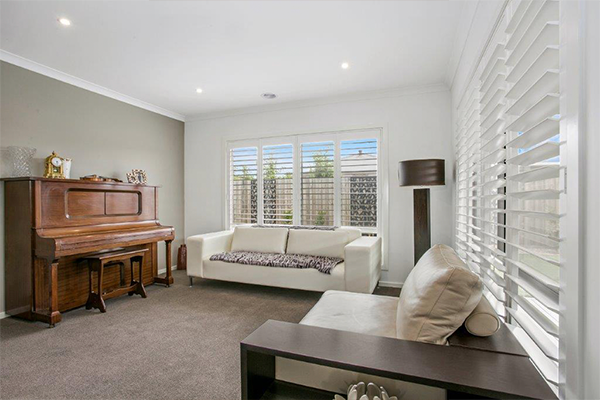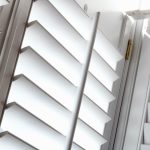The benefits hidden tilt rods: Clearview
Clearview tilt rods, also known as hidden tilt rods are positioned on the backside of the louvers (nearest the window), and normally located on the side of the hinges.
It is important to note that all window louvers should be operated by moving the louver, not the tilt rod.
One of the biggest advantages to hidden tilt louvers is the louver repairs.
If a customer experiences damage to one or several of the louvers a louver with a traditional tilt rod can be more of a challenge to repair, but with a hidden tilt, you unscrew the back of the louver and push out the damaged one. Simply slide in the new louver and refasten the hidden tilt screw. It should only take a few minutes.

The issue with center-tilt rods
Traditionally, shutters include a tilt rod in the center of each panel, which allows the louvers to move all at one time.
People tend to grab the same part of the tilt rod every time they open or close the louvers and over time this may lead to the louver staple from pulling out of the louver or tilt rod itself.
Some factors to consider
Aesthetic looks are a large factor in purchasing shutters.
The center tilt rod looks best with traditional homes and hidden tilt with a transitional or modern look.
Latest trends indicate that a very modern home looks best with a larger louver (3.5” or 4.5”) and hidden tilt.
The hidden tilt helps prevent the creation of another line in the window. This can also be true for multiple panels in one large opening. If the window is a three or four-panel shutter, and a divider rail is used, this can cause a visual mess.
Most customers prefer a shutter for its ability to allow light in and also the amazing view-through capability. The vertical line of the center tilt creates an obstruction in viewing outside. Hidden tilt allows for more light to come in and also a clearer view to the outside.








